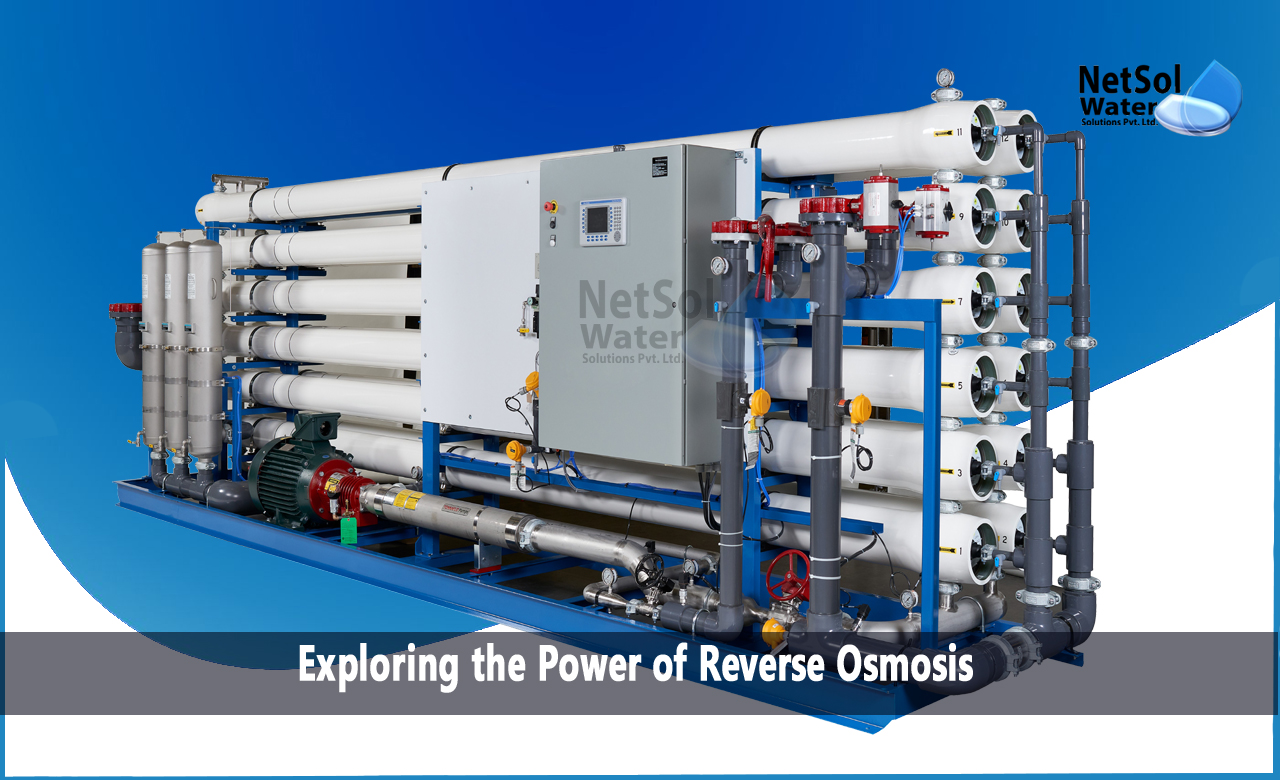Exploring the Power of Reverse Osmosis
Clean and safe water is a precious resource that is essential for various aspects of life. In the quest for effective water purification, reverse osmosis has emerged as a powerful technology. This blog aims to explore the power of reverse osmosis, its working principles, and its significance in addressing water quality challenges.
1. The Principle of Reverse Osmosis:
Reverse osmosis operates on the principle of selectively permeable membranes and the application of external pressure. Unlike natural osmosis, where water molecules move from a region of low solute concentration to high solute concentration, reverse osmosis reverses this process by exerting pressure on the concentrated solution. This pressure forces water molecules to pass through a semipermeable membrane, leaving behind contaminants and impurities.
2. Working Mechanism:
Reverse osmosis systems consist of several key components:
· Pre-Filtration: Prior to entering the reverse osmosis membrane, the water undergoes pre-filtration to remove sediment, debris, and larger particles. This step ensures the longevity and optimal performance of the membrane.
· Semipermeable Membrane: The heart of the reverse osmosis system is the semipermeable membrane. It consists of tiny pores that allow water molecules to pass through while blocking larger contaminants, such as dissolved salts, minerals, bacteria, viruses, and organic compounds.
· Pressure Application: A high-pressure pump is employed to create the necessary pressure to overcome the osmotic pressure and push water molecules through the membrane. The applied pressure varies depending on the specific water quality and desired purification level.
· Permeate and Concentrate Streams: As water passes through the membrane, it separates into two streams: the permeate stream, which contains purified water, and the concentrate stream (also known as brine or reject stream), which carries the rejected impurities and contaminants.
· Post-Treatment: In some cases, post-treatment processes, such as remineralization or disinfection, may be employed to further enhance the quality and taste of the purified water.
3. Advancements in Reverse Osmosis Technology:
In recent years, advancements have been made to enhance the efficiency and effectiveness of reverse osmosis systems:
· Membrane Technology: Significant progress has been made in membrane development, leading to improved rejection rates, increased water recovery, and reduced fouling. Thin-film composite membranes and nanotechnology have revolutionized membrane performance, allowing for higher water flux and better contaminant removal.
· Energy Efficiency: Energy consumption is a key consideration in reverse osmosis systems. Advanced energy recovery devices, such as pressure exchangers and turbine systems, have been introduced to reduce energy requirements and improve overall efficiency. These innovations contribute to sustainable water treatment practices.
· Monitoring and Control: Advanced monitoring and control systems have been implemented to optimize reverse osmosis performance. Real-time data monitoring, automation, and intelligent algorithms enable operators to optimize operating parameters, detect and address potential issues, and improve system reliability.
4. Future Prospects:
Reverse osmosis holds immense potential for future advancements and applications:
· Smart Water Treatment: The integration of reverse osmosis systems with smart technologies, such as Internet of Things (IoT) sensors and data analytics, can enable real-time monitoring, predictive maintenance, and remote control. This can lead to more efficient operation, reduced costs, and improved system performance.
· Sustainable Water Management: As water scarcity becomes an increasingly pressing issue, reverse osmosis will play a pivotal role in sustainable water management. By purifying alternative water sources like brackish water and wastewater, reverse osmosis can expand water availability and reduce reliance on freshwater supplies.
· Innovations in Membrane Design: Ongoing research focuses on developing advanced membranes with enhanced selectivity, increased flux, and improved fouling resistance. These innovations will lead to more efficient and durable reverse osmosis systems, further reducing energy consumption and operational costs.
· Integration with Renewable Energy: Combining reverse osmosis with renewable energy sources, such as solar or wind power, can enhance sustainability and reduce the carbon footprint of water treatment processes. This integration can contribute to achieving a greener and more environmentally friendly water purification infrastructure.
Conclusion:
Reverse osmosis has the potential to revolutionize water treatment and address global water challenges. With its diverse applications, ongoing technological advancements, and future prospects, reverse osmosis is set to play a pivotal role in ensuring access to clean and safe water for communities, industries, and the environment. By harnessing the power of reverse osmosis, we can pave the way for a more sustainable and water-secure future.
Netsol Water is Greater Noida-based leading water & wastewater treatment plant manufacturer. We are industry's most demanding company based on client review and work quality. We are known as best commercial RO plant manufacturers, industrial RO plant manufacturer, sewage treatment plant manufacturer, Water Softener Plant Manufacturers and effluent treatment plant manufacturers. Apart from this 24x7 customer support is our USP. Call on +91-9650608473, or write us at enquiry@netsolwater.com for any support, inquiry or product-purchase related query.



